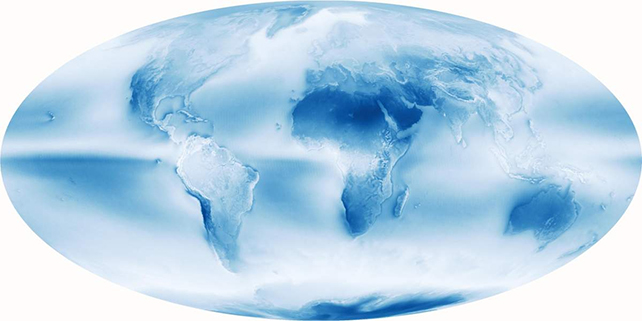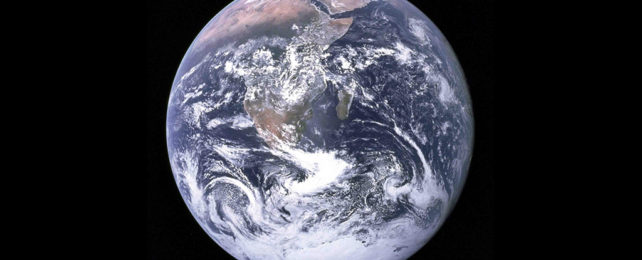Take a look at Earth from far off in space, you'd notice it looks uniformly bright. Considering the Southern Hemisphere's disproportionate expanse of dark ocean waters should reflect back less sunlight, this isn't what we might expect down here on the surface.
It's a mystery that's been of interest to scientists since the early 1970s, when we were first able to get satellites into orbit to measure reflected solar radiation, which is technically known as albedo. Now, that mystery may have been solved.
The explanation is that while the oceans of the Southern Hemisphere absorb more sunlight, they also produce a higher number of storms – and the resulting storm clouds act as reflectors that balance out the solar radiation being sent back into space.
"The new research solves a basic scientific question and deepens our understanding of Earth's radiation balance and its effectors," says Yohai Kaspi, a geophysicist at the Weizmann Institute of Science in Israel.
While all kinds of factors affect our planet's albedo – whether or not there's snow on the ground, for example – measurements closer to Earth's surface show a difference in albedo between the hemispheres.
That's not the case when looking at the planet from further out, though.
The team collected data from various reports, including those from the NASA Terra satellite and the ERA5 global weather dataset, which also incorporates satellite readings. They then cross referenced 50 years of data on cloud cover against storm location and intensity information.
Based on the patterns of cloud-generating cyclones and cloud-suppressing anticyclones formed by the interplay of temperature and pressure in the atmosphere, the researchers were able to show a balancing out of Earth's albedo.

"Cloud albedo arising from strong storms above the Southern Hemisphere was found to be a high-precision offsetting agent to the large land area in the Northern Hemisphere, and thus symmetry is preserved," says climate scientist Or Hadas, from the Weizmann Institute of Science.
"This suggests that storms are the linking factor between the brightness of Earth's surface and that of clouds, solving the symmetry mystery."
The next question is how global warming might affect this balance. Based on climate models, it's likely that as the planet warms, the Northern Hemisphere will have fewer storms overall, while the Southern Hemisphere will have fewer weaker and moderate storms.
However, the number of severe storms in the Southern Hemisphere is set to increase due to 'Arctic amplification'; the knock-on effects of faster warming at the North Pole. Theoretically, that should unbalance the albedo symmetry.
According to the researchers' data, the more severe weather events might not contribute to more cloud-albedo over the Southern Hemisphere as cloud levels reach saturation in strong storms. A Southern Hemisphere skewed towards stronger storms with fewer storms overall might mean a similar decline in albedo over both hemispheres, maintaining symmetry.
At this stage though, it's difficult to predict exact what will happen to Earth's overall shine.
"It is not yet possible to determine with certainty whether the symmetry will break in the face of global warming," says Kaspi.
"As global warming continues, geoengineered solutions will become vital for human life to carry on alongside it. I hope that a better understanding of basic climate phenomena, such as the hemispheric albedo symmetry, will help in developing these solutions."
The research has been published in PNAS.
